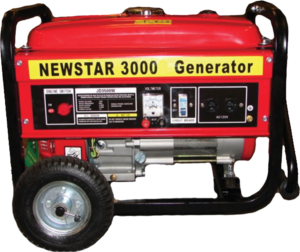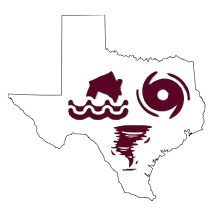Electrical and Power Issues
By following key safety precautions when dealing with electricity during and after storms and other disasters, you can help prevent death, injuries, and property damage. Take care when stepping into a flooded area and be aware that submerged outlets or electrical cords may energize the water, potentially posing a lethal trap.
In case of an emergency, the power to your house should be turned off through the main breaker switch, circuit breaker panel, or fuse box. In addition, all homes should be equipped with ground fault circuit interrupters (GFCIs). GFCIs are inexpensive electrical devices that, if installed in household branch circuits, are designed to protect people from severe or fatal electric shocks. GFCIs could prevent over two-thirds of electrocutions. Because a GFCI detects ground faults, it can also prevent some electrical fires and reduce the severity of others by interrupting the flow of electric current. GFCIs are commonly found in kitchens, bathrooms, laundry rooms, or other places where water and electricity are close together. If you do not have them, consider having them installed by a licensed electrician.
Wet Electrical Equipment
Do not use electrical appliances that have been wet. Water can damage the motors in electrical appliances such as furnaces, freezers, refrigerators, washing machines, and dryers. For more information, the National Electrical Manufacturers Association (NEMA) has produced a brochure, Guidelines for Handling Water Damaged Electrical Equipment, for use by suppliers, installers, inspectors, and users of electrical products to provide advice on the safe handling of electrical equipment that has been exposed to water. It outlines which items will require complete replacement or can be reconditioned by a trained professional. Equipment covered includes electrical distribution equipment, motor circuits, power equipment, transformers, wire, cable and flexible cords, wiring devices, GFCIs and surge protectors, lighting fixtures and ballasts, motors, electronic products including signaling, protection, communication systems, industrial controls and cable trays. The NEMA brochure can be downloaded for free online.
Downed Power Lines
These can carry an electric current strong enough to cause serious injury or death (Figure 3-2). The following tips can keep you safe around downed lines:
- If you see a downed power line, move away from the line and anything touching it. The human body is a ready conductor of electricity.
- The proper way to move away from the line is to shuffle away with small steps, keeping your feet together and on the ground at all times. This will minimize the potential for a strong electric shock. Electricity wants to move from a high voltage zone to a low voltage zone — and it could do that through your body.
- If you see someone who is in direct or indirect contact with the downed line, do not touch the person. You could become the next victim. Call 911 instead.
- Do not attempt to use another object such as a broom or stick to move a downed power line or anything in contact with the line. Even nonconductive materials like wood or cloth, if slightly wet, can conduct electricity and then electrocute you.
- Be careful not to put your feet near water where a downed power line is located.
- If you are in your car and it is in contact with the downed line, stay in your car. Tell others to stay away from your vehicle.
- If you must leave your car because it is on fire, jump out of the vehicle with both feet together and avoid contact with the live car and the ground at the same time. This way you avoid being the path of electricity from the car to the earth. Shuffle away from the car.
- Do not drive over downed lines.

Alternative Power Sources
Energy efficient equipment will be especially useful during an emergency, when you may be on alternative forms of power with limited supply. For example, a regular 100-watt lamp running off an emergency power station (essentially built around a car battery) may run for two hours. That same emergency station can run a fuel-efficient 23-watt compact fluorescent light for about 8-9 hours with the same light output. As another example, a refrigerator with U.S. Environmental Protection Agency’s (EPA) Energy Star label can run on a fuel-efficient generator for 16 hours on one gallon of gas. Since most refrigerators do not need to run continuously, it may be possible to run the efficient refrigerator on one gallon of gas for one or two days.

Figure 3-3. Energy Star appliances use less energy than standard appliances. Source: EPA
Therefore, you should strive to make your house as energy efficient as possible as you replace equipment and appliances in your house at the end of their normal life. For example, if the lights, television, or refrigerator need replacing, consider products with the Energy Star label (Figure 3-3). These products may cost slightly more, but over their lifetime, the energy savings will far outweigh the small initial cost increase.
Generators
Some households may require uninterrupted power because of the critical needs of some family members. For example, the elderly, disabled, or sick may require a respirator, dialysis machine, or other medical equipment. Some medicine such as insulin, which is stored over a month, may need to be refrigerated. For many families, the most important major power requirement is to run a refrigerator or freezer. If your family cannot get by without the refrigerator, or there are other critical power needs for medical or other purposes, then you may want to consider a portable generator (Figure 3-4).

While portable electric generators can provide a good source of power, if improperly installed or operated, they can become deadly. Do not connect generators directly to household wiring. Power from generators can backfeed along power lines and electrocute anyone coming in contact with them, including utility workers making powerline repairs. A qualified, licensed electrician should install your generator to ensure that it meets local electrical codes.
Other generator-related tips include:
- Make sure your generator is properly grounded.
- Keep the generator dry.
- Plug appliances directly into the generator.
- Make sure extension cords used with generators are rated for the load, and are free of cuts or worn insulation and have three-pronged plugs.
- Do not overload the generator.
- Use a ground fault circuit interrupter (GFCI) to help prevent electrocutions and electrical shock injuries.
Most importantly, never run a generator indoors or in your garage because of the possibility of carbon monoxide gas accumulation, which cannot be detected by smell. Good ventilation is required.
Operate your generator outside and away from open windows. Do not hook up a generator to your house power supply without a licensed electrician.
In general, when running your refrigerator with a generator, keep the refrigerator and freezer at the coldest setting. Refrigerators may only need to run a few hours a day to preserve food. Using a refrigerator thermometer, you should aim to maintain 40 degrees in the refrigerator compartment and 0 degrees in the freezer. Open the refrigerator door as little as possible.
Power Stations
Power stations are found in many hardware stores and may have a radio, flashlight, air compressor, battery jump starter, AC outlet, or DC outlet built around a modified car battery (Figure 3-5). These units can come in handy during a power outage, since they fulfill part of your stock of emergency supplies and provide limited emergency power.

Portable Chargers
Several models of small, portable chargers are available that can be used to charge electronic devices like smart phones, tablets, or laptop computers. It should be noted that during or after an emergency, there might be other reasons the devices do not work that are beyond your control, such as heavy traffic or a disrupted internet connection.
Inverters
Inverters take the 12-volt DC power from your car battery and convert it to 115-volt AC power that can run household appliances. This can be very important if you need to use power tools in an emergency and the power is out. The inverter will drain your car battery, but you can find inverters that have a low battery shutdown feature to prevent total battery drain. You should not run an inverter with the car running unless the manufacturer provides specific instructions with safety guidelines. In addition, the car should not be run in a garage, but rather in a well-ventilated area, if the manufacturer approves of such procedures.
Battery Chargers
Your car battery can be an important source of DC and AC power with an inverter. To keep the car battery charged, you should consider a battery charger as part of your emergency supplies. The charger only works when there is household power or backup power through a generator, but it can recharge your car battery if it is needed. New units are small and portable and provide a quick charge to a dead battery in only a few minutes and a total charge in a few hours.
